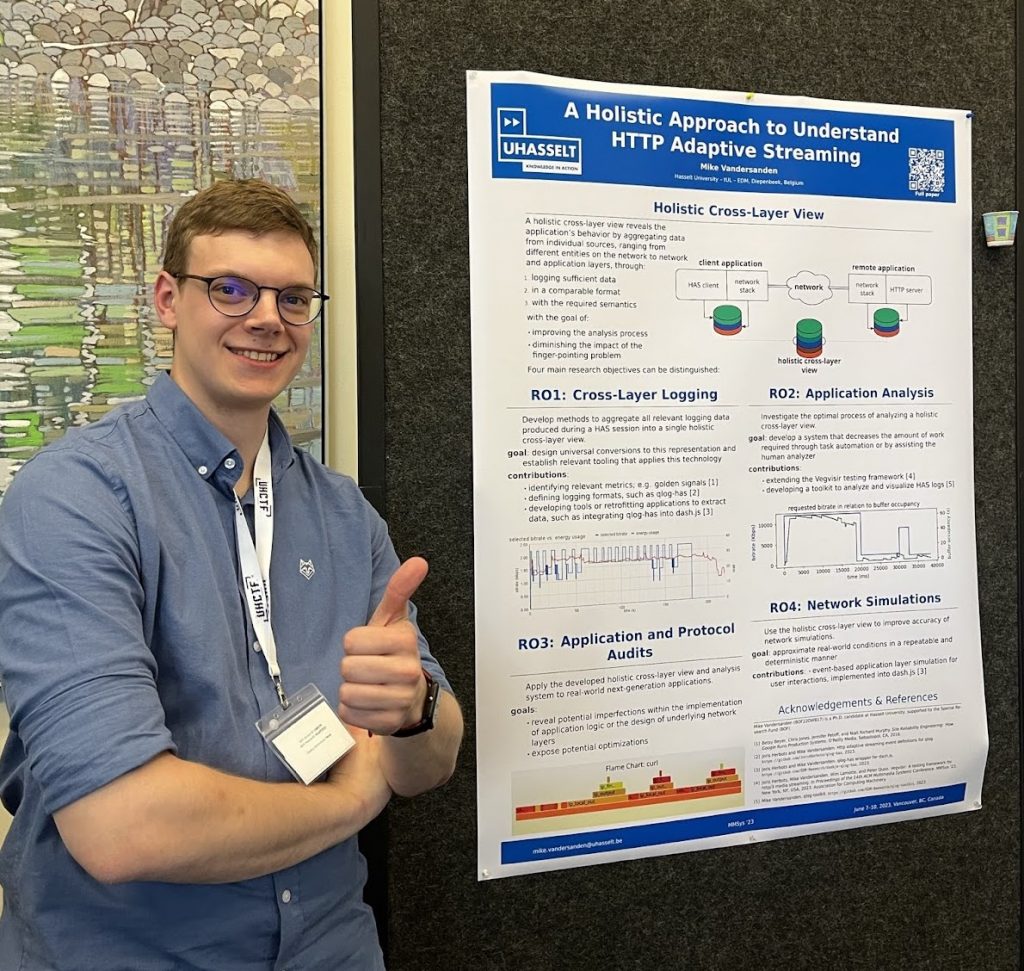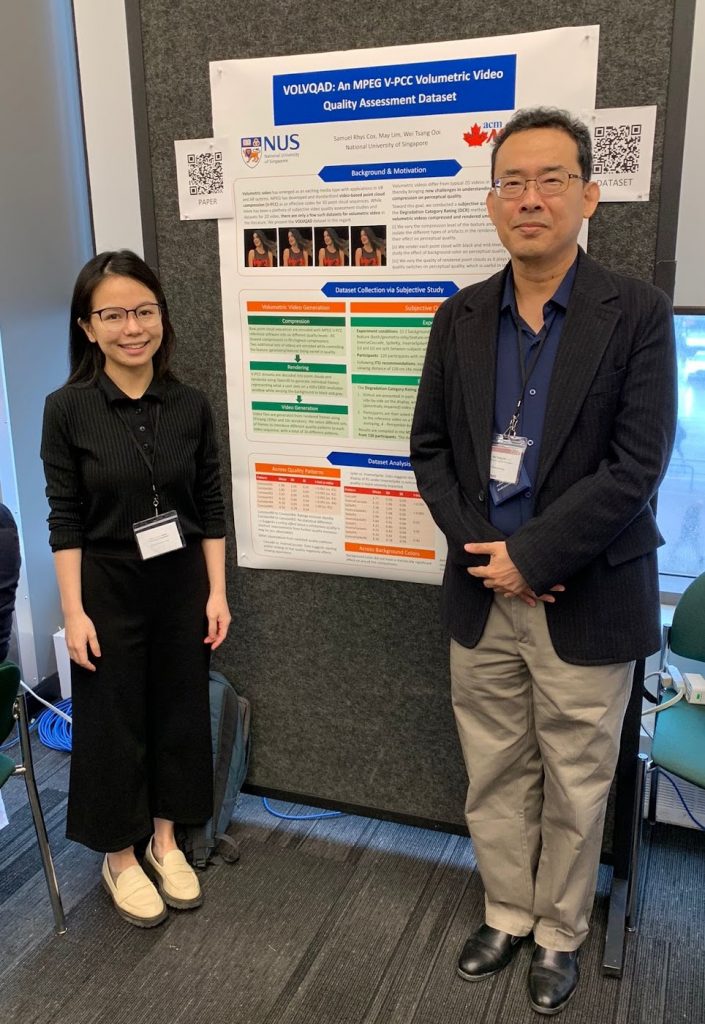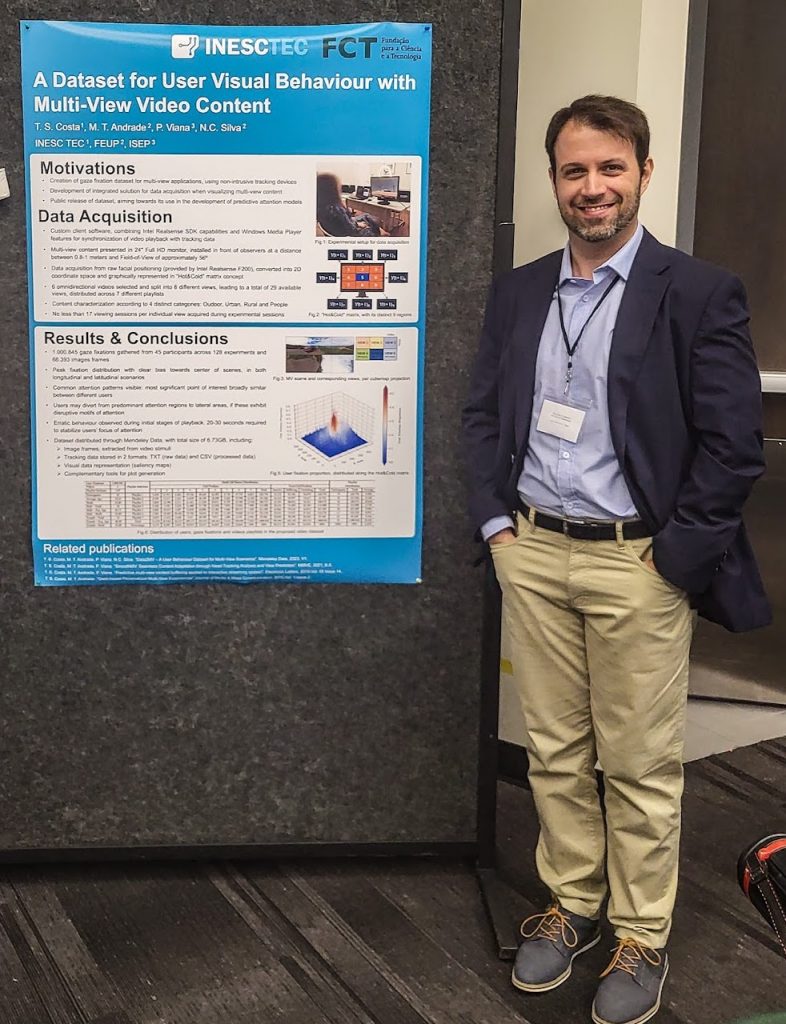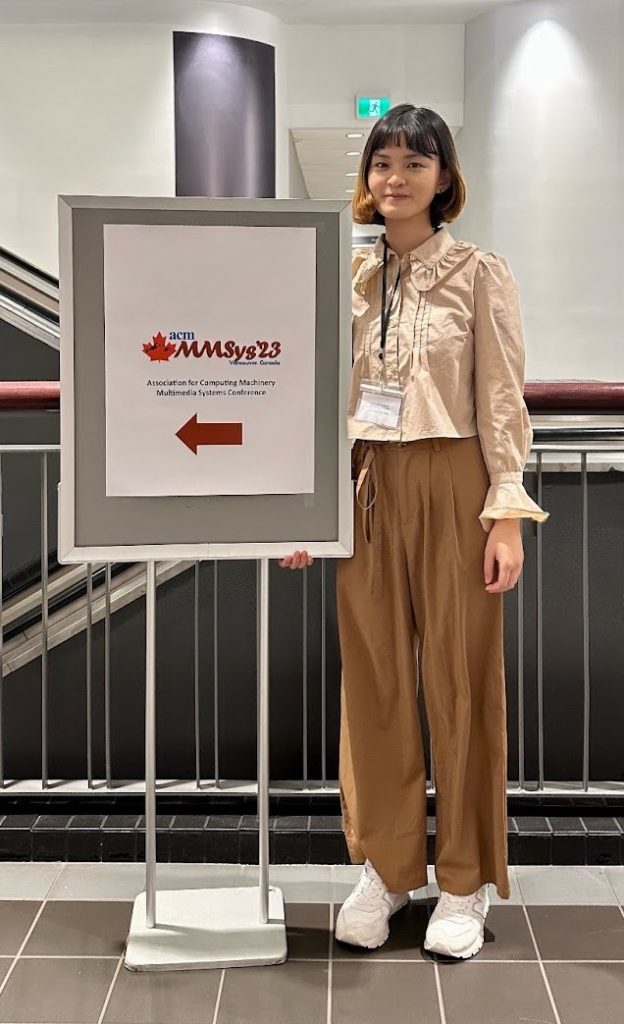
Introduction
This column provides a report on the last Video Quality Experts Group (VQEG) plenary meeting, which took place from 26 to 30 June 2023 in San Mateo (USA), hosted by Sony Interactive Entertainment. More than 90 participants worldwide registered for the hybrid meeting, counting with the physical attendance of more than 40 people. This meeting was co-located with the ITU-T SG12 meeting, which took place in the first two days of the week. In addition, more than 50 presentations related to the ongoing projects within VQEG were provided, leading to interesting discussions among the researchers attending the meeting. All the related information, minutes, and files from the meeting are available online on the VQEG meeting website, and video recordings of the meeting are available on Youtube.
In this meeting, there were several aspects that can be relevant for the SIGMM community working on quality assessment. For instance, there are interesting new work items and efforts on updating existing recommendations discussed in the ITU-T SG12 co-located meeting (see the section about the Intersector Rapporteur Group on Audiovisual Quality Assessment). In addition, there was an interesting panel related to deep learning for video coding and video quality with experts from different companies (e.g., Netflix, Adobe, Meta, and Google) (see the Emerging Technologies Group section). Also, a special session on Quality of Experience (QoE) for gaming was organized, involving researchers from several international institutions. Apart from this, readers may be interested in the presentation about MPEG activities on quality assessment and the different developments from industry and academia on tools, algorithms and methods for video quality assessment.
We encourage readers interested in any of the activities going on in the working groups to check their websites and subscribe to the corresponding reflectors, to follow them and get involved.

Overview of VQEG Projects
Audiovisual HD (AVHD)
The AVHD group investigates improved subjective and objective methods for analyzing commonly available video systems. In this meeting, there were several presentations related to topics covered by this group, which were distributed in different sessions during the meeting.
Nabajeet Barman (Kingston University, UK) presented a datasheet for subjective and objective quality assessment datasets. Ali Ak (Nantes Université, France) delivered a presentation on the acceptability and annoyance of video quality in context. Mikołaj Leszczuk (AGH University, Poland) presented a crowdsourcing pixel quality study using non-neutral photos. Kamil Koniuch (AGH University, Poland) discussed about the role of theoretical models in ecologically valid studies, covering the example of a video quality of experience model. Jingwen Zhu (Nantes Université, France) presented her work on evaluating the streaming experience of the viewers with Just Noticeable Difference (JND)-based Encoding. Also, Lucjan Janowski (AGH University, Poland) talked about proposing a more ecologically-valid experiment protocol using YouTube platform.
In addition, there were four presentations by researchers from the industry sector. Hojat Yeganeh (SSIMWAVE/IMAX, USA) talked about how more accurate video quality assessment metrics would lead to more savings. Lukas Krasula (Netflix, USA) delivered a presentation on subjective video quality for 4K HDR-WCG content using a browser-based approach for at-home testing. Also, Christos Bampis (Netflix, USA) presented the work done by Netflix on improving video quality with neural networks. Finally, Pranav Sodhani (Apple, USA) talked about how to evaluate videos with the Advanced Video Quality Tool (AVQT).
Quality Assessment for Health applications (QAH)
The QAH group works on the quality assessment of health applications, considering both subjective evaluation and the development of datasets, objective metrics, and task-based approaches. The group is currently working towards an ITU-T recommendation for the assessment of medical contents. In this sense, Meriem Outtas (INSA Rennes, France) led an editing session of a draft of this recommendation.
Statistical Analysis Methods (SAM)
The SAM group works on improving analysis methods both for the results of subjective experiments and for objective quality models and metrics. The group is currently working on updating and merging the ITU-T recommendations P.913, P.911, and P.910.
Apart from this, several researchers presented their works on related topics. For instance, Pablo Pérez (Nokia XR Lab, Spain) presented (not so) new findings about transmission rating scale and subjective scores. Also, Jingwen Zhu (Nantes Université, France) presented ZREC, an approach for mean and percentile opinion scores recovery. In addition, Andreas Pastor (Nantes Université, France) presented three works: 1) on the accuracy of open video quality metrics for local decision in AV1 video codec, 2) on recovering quality scores in noisy pairwise subjective experiments using negative log-likelihood, and 3) on guidelines for subjective haptic quality assessment, considering a case study on quality assessment of compressed haptic signals. Lucjan Janowski (AGH University, Poland) discussed about experiment precision, proposing experiment precision measures and methods for experiments comparison. Finally, there were three presentations from members of the University of Konstanz (Germany). Dietmar Saupe presented the JPEG AIC-3 activity on fine-grained assessment of subjective quality of compressed images, Mohsen Jenadeleh talked about how relaxed forced choice improves performance of visual quality assessment methods, and Mirko Dulfer presented his work on quantization for Mean Opinion Score (MOS) recovery in Absolute Category Rating (ACR) experiments.
Computer Generated Imagery (CGI)
CGI group is devoted to analyzing and evaluating of computer-generated content, with a focus on gaming in particular. In this meeting, Saman Zadtootaghaj (Sony Interactive Entertainment, Germany) an Nabajeet Barman (Kingston University, UK) organized a special gaming session, in which researchers from several international institutions presented their work in this topic. Among them, Yu-Chih Chen (UT Austin LIVE Lab, USA) presented GAMIVAL, a Video Quality Prediction on Mobile Cloud Gaming Content. Also, Urvashi Pal (Akamai, USA) delivered a presentation on web streaming quality assessment via computer vision applications over cloud. Mathias Wien (RWTH Aachen University, Germany) provided updates on ITU-T P.BBQCG work item, dataset and model development. Avinab Saha (UT Austin LIVE Lab, USA) presented a study of subjective and objective quality assessment of mobile cloud gaming videos. Finally, Irina Cotanis (Infovista, Sweden) and Karan Mitra (Luleå University of Technology, Sweden) presented their work towards QoE models for mobile cloud and virtual reality games.
No Reference Metrics (NORM)
The NORM group is an open collaborative project for developing no-reference metrics for monitoring visual service quality. In this meeting, Margaret Pinson (NTIA, USA) and Ioannis Katsavounidis (Meta, USA), two of the chairs of the group, provided a summary of NORM successes and discussion of current efforts for improved complexity metric. In addition, there were six presentations dealing with related topics. C.-C. Jay Kuo (University of Southern California, USA) talked about blind visual quality assessment for mobile/edge computing. Vignesh V. Menon (University of Klagenfurt, Austria) presented the updates of the Video Quality Analyzer (VQA). Yilin Wang (Google/YouTube, USA) gave a talk on the recent updates on the Universal Video Quality (UVQ). Farhad Pakdaman (Tampere University, Finland) and Li Yu (Nanjing University, China), presented a low complexity no-reference image quality assessment based on multi-scale attention mechanism with natural scene statistics. Finally, Mikołaj Leszczuk (AGH University, Poland) presented his work on visual quality indicators adapted to resolution changes and on considering in-the-wild video content as a special case of user generated content and a system for its recognition.
Emerging Technologies Group (ETG)
The main objective of the ETG group is to address various aspects of multimedia that do not fall under the scope of any of the existing VQEG groups. The topics addressed are not necessarily directly related to “video quality” but can indirectly impact the work addressed as part of VQEG. This group aims to provide a common platform for people to gather together and discuss new emerging topics, discuss possible collaborations in the form of joint survey papers/whitepapers, funding proposals, etc.
One of the topics addressed by this group is related to the use of artificial-intelligence technologies to different domains, such as compression, super-resolution, and video quality assessment. In this sense, Saman Zadtootaghaj (Sony Interactive Entertainment, Germany) organized a panel session with experts from different companies (e.g., Netflix, Adobe, Meta, and Google) on deep learning in the video coding and video quality domains. In this sense, Marcos Conde (Sony Interactive Entertainment, Germany) and David Minnen (Google, USA) gave a talk on generative compression and the challenges for quality assessment.
Another topic covered by this group is greening of streaming and related trends. In this sense, Vignesh V. Menon and Samira Afzal (University of Klagenfurt, Austria) presented their work on green variable framerate encoding for adaptive live streaming. Also, Prajit T. Rajendran (Université Paris Saclay, France) and Vignesh V. Menon (University of Klagenfurt, Austria) delivered a presentation on energy efficient live per-title encoding for adaptive streaming. Finally, Berivan Isik (Stanford University, USA) talked about sandwiched video compression to efficiently extending the reach of standard codecs with neural wrappers.
Joint Effort Group (JEG) – Hybrid
The JEG group was focused on a joint work to develop hybrid perceptual/bitstream metrics and gradually evolved over time to include several areas of Video Quality Assessment (VQA), such as the creation of a large dataset for training such models using full-reference metrics instead of subjective metrics. In addition, the group will include under its activities the VQEG project Implementer’s Guide for Video Quality Metrics (IGVQM).
Apart from this, there were three presentations addressing related topics in this meeting. Nabajeet Barman (Kingston University, UK) presented a subjective dataset for multi-screen video streaming applications. Also, Lohic Fotio (Politecnico di Torino, Italy) presented his works entitled “Human-in-the-loop” training procedure of the artificial-intelligence-based observer (AIO) of a real subject and advances on the “template” on how to report DNN-based video quality metrics.
The website of the group includes a list of activities of interest, freely available publications, and other resources.
Immersive Media Group (IMG)
The IMG group is focused on the research on quality assessment of immersive media. The main joint activity going on within the group is the development of a test plan to evaluate the QoE of immersive interactive communication systems, which is carried out in collaboration with ITU-T through the work item P.IXC. In this meeting, Pablo Pérez (Nokia XR Lab, Spain) and Jesús Gutiérrez (Universidad Politécnica de Madrid, Spain) provided a report on the status of the test plan, including the test proposals from 13 different groups that have joined the activity, which will be launched in September.
In addition to this, Shirin Rafiei (RISE, Sweden) delivered a presentation on her work on human interaction in industrial tele-operated driving through a laboratory investigation.
Quality Assessment for Computer Vision Applications (QACoViA)
The goal of the QACoViA group is to study the visual quality requirements for computer vision methods, where the “final observer” is an algorithm. In this meeting, Avrajyoti Dutta (AGH University, Poland) delivered a presentation dealing with the subjective quality assessment of video summarization algorithms through a crowdsourcing approach.
Intersector Rapporteur Group on Audiovisual Quality Assessment (IRG-AVQA)
This VQEG meeting was co-located with the rapporteur group meeting of ITU-T Study Group 12 – Question 19, coordinated by Chulhee Lee (Yonsei University, Korea). During the first two days of the week, the experts from ITU-T and VQEG worked together on various topics. For instance, there was an editing session to work together on the VQEG proposal to merge the ITU-T Recommendations P.910, P.911, and P.913, including updates with new methods. Another topic addressed during this meeting was the working item “P.obj-recog”, related to the development of an object-recognition-rate-estimation model in surveillance video of autonomous driving. In this sense, a liaison statement was also discussed with the VQEG AVHD group. Also in relation to this group, another liaison statement was discussed on the new work item “P.SMAR” on subjective tests for evaluating the user experience for mobile Augmented Reality (AR) applications.
Other updates
One interesting presentation was given by Mathias Wien (RWTH Aachen University, Germany) on the quality evaluation activities carried out within the MPEG Visual Quality Assessment group, including the expert viewing tests. This presentation and the follow-up discussions will help to strengthen the collaboration between VQEG and MPEG on video quality evaluation activities.
The next VQEG plenary meeting will take place in autumn 2023 and will be announced soon on the VQEG website.





















